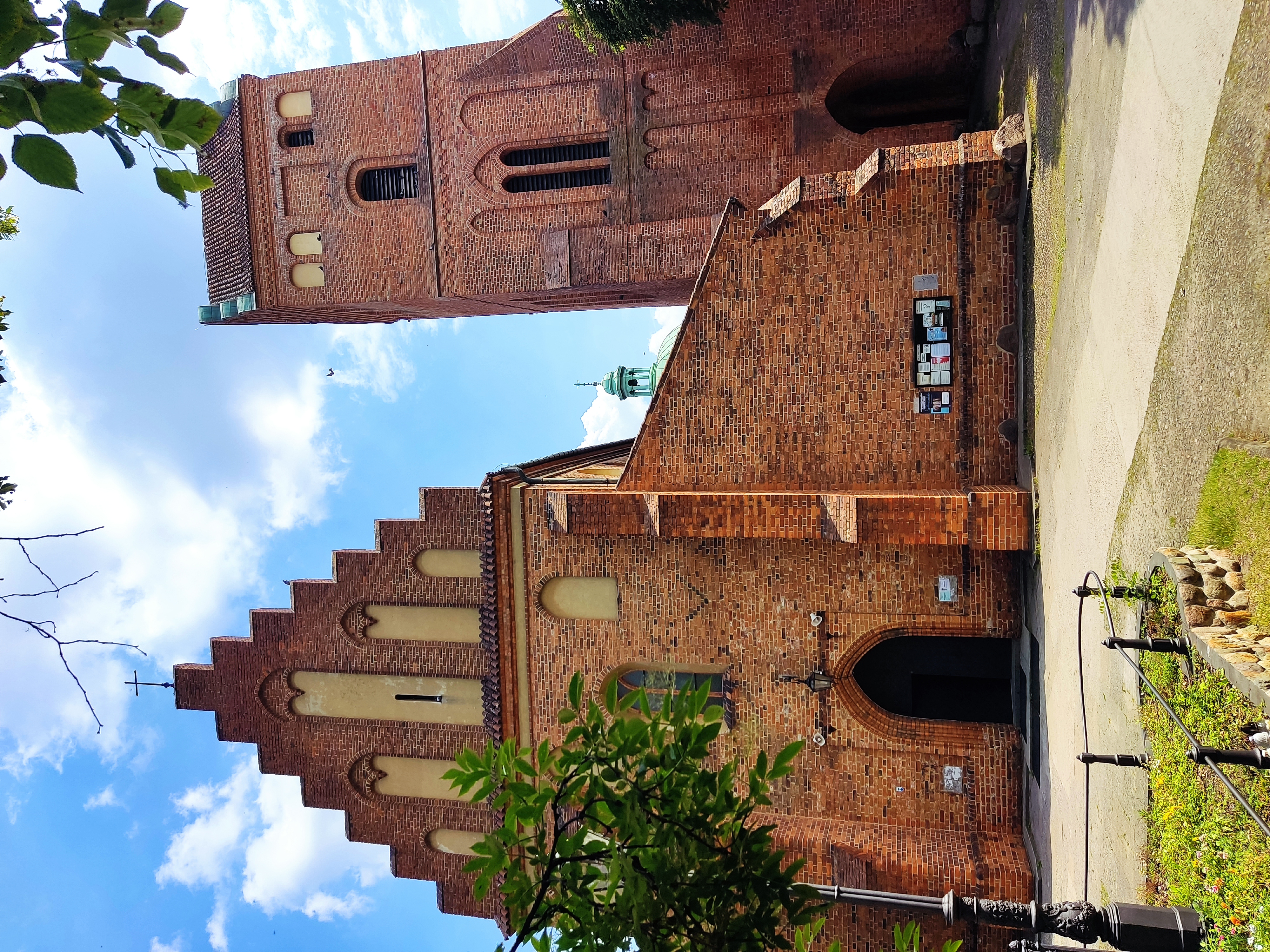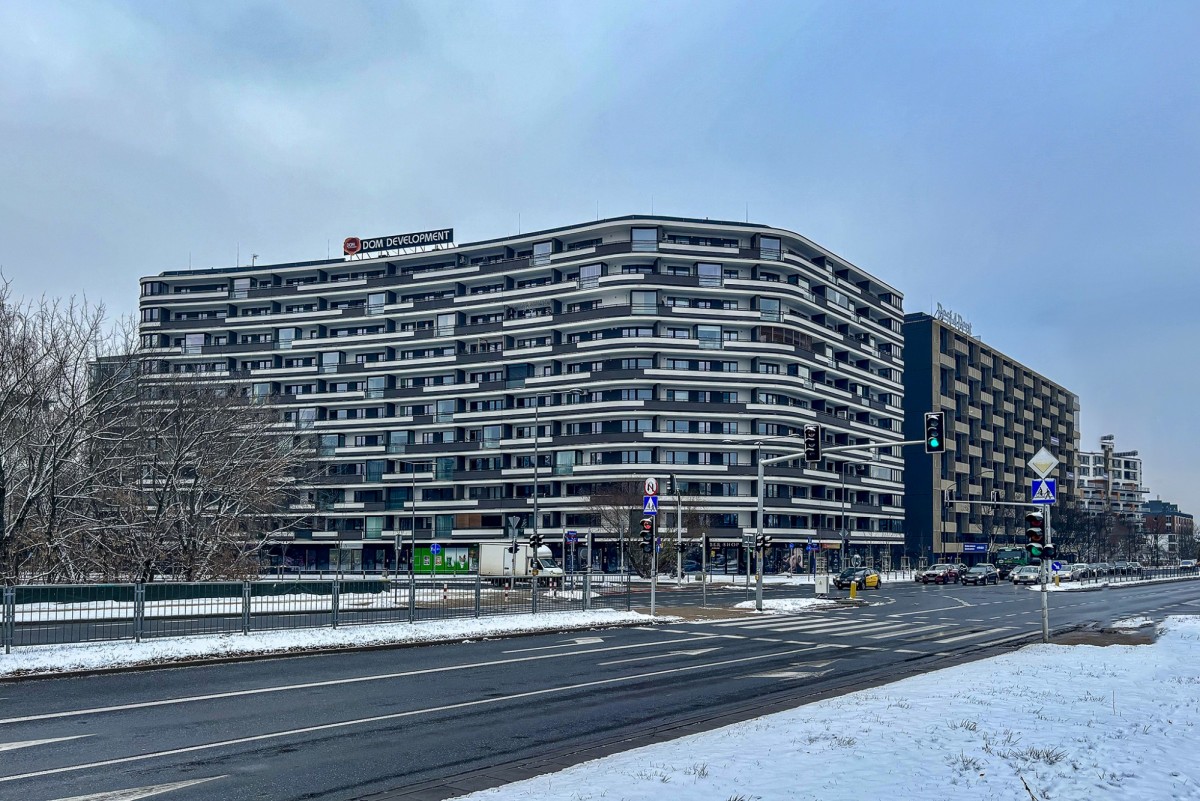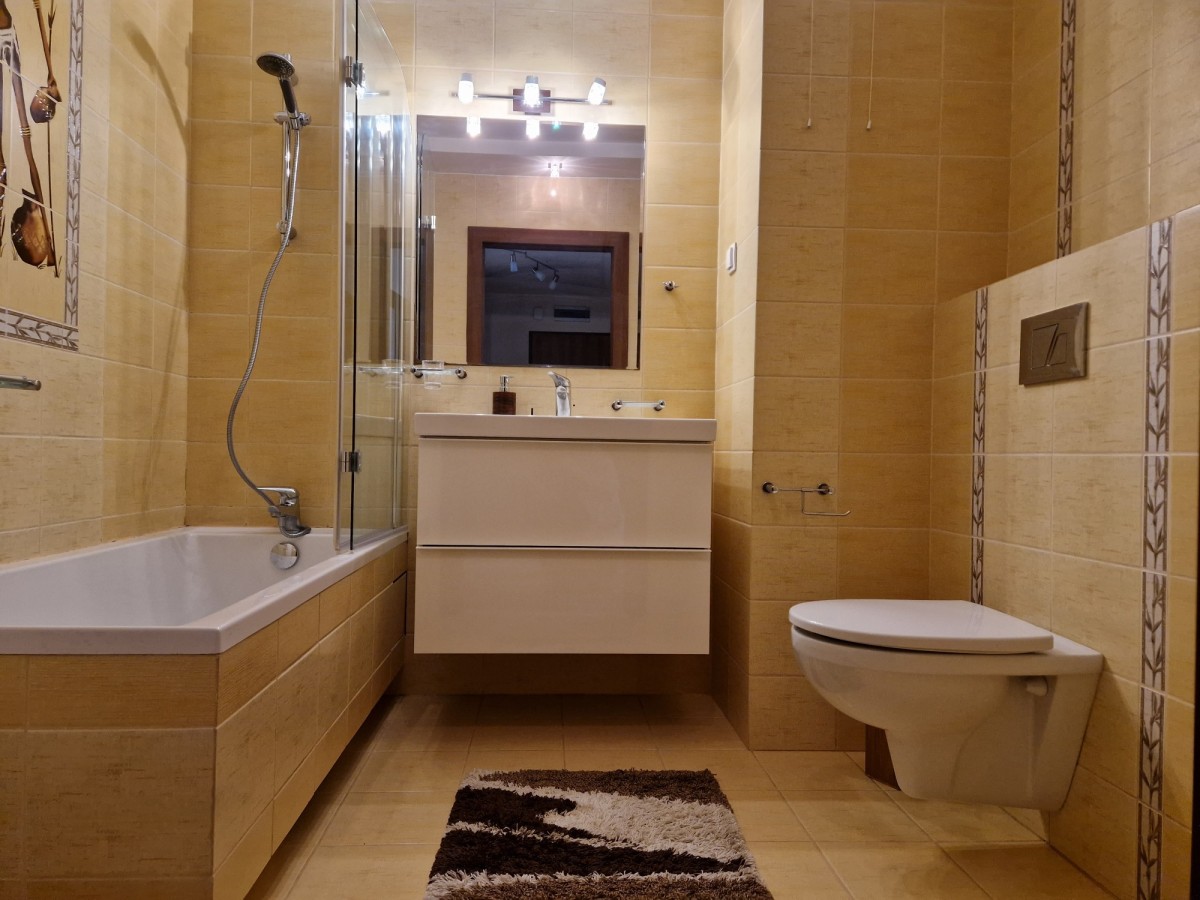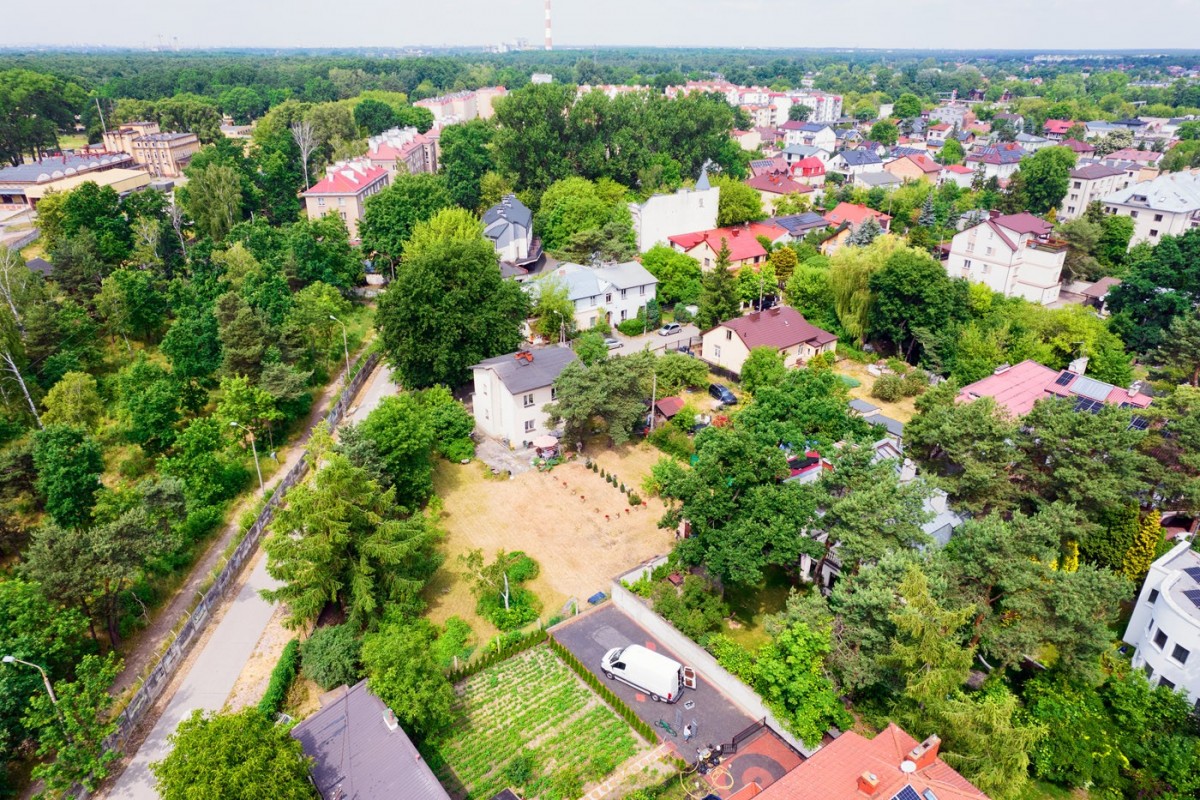The history of Warsaw begins in the area of today's Śródmieścia.

The history of Warsaw begins in the area of today's Śródmieścia. It all started in the town of Jazdów (Agrykoli region) on the slope of the Vistula, which, after the destruction of 1262 and 1281, was moved further north, to the area of today's Grodzkiej street. Near the city, at the turn of the 13th and 14th centuries, a city was founded by the right of Chelm, which later turned into Starą Warszawę. The location of the city is attributed to Prince Bolesław II of Mazowiecki, as well as townspeople and merchants from Torunia. Stara Warszawa developed strongly in the 14th century thanks to Prince Troiden. In 1408, Nowa Warszawa was nearby, and Stara Warszawa received confirmation of its city rights in 1413. At the beginning of the 15th century, development slowed down a bit. In 1526 the entire territory became part of the Kingdom of Poland. The villages of Solec and Ujazdów, as well as the city of Nowa Warszawa, developed independently of Starej Warszawy.
Warsaw gained more and more prestige - Polish rulers often stayed in Zamku Królewskim, and after the fire of Krakowskiego Wawelu in 1595, King Sigismund III Vasa decided to permanently move his court here. Thanks to this, and also thanks to the parliament organized in the vicinity of Warsaw, the nobility increasingly willingly settled in the city, which built palaces for itself, including on Miodowej, Długiej and Krakowskim Przedmieściu streets. In 1573-1603, at the exit from the street. Mostowej there was a wooden permanent bridge by Zygmunt August. In 1621–1624, the vast area around Starej and Nowej Warszawy was surrounded by an earthen rampart called Wałem Zygmuntowskim.
Since the 16th century, the so-called yurydyks began to develop in the vicinity of Starą Warszawę (yurydyka is a settlement near the royal city, less often an enclave on municipal lands, not subject to municipal authorities and city courts). There were more than twenty of them, privately owned and not subject to municipal jurisdiction. Most of them later contributed to the development of the city, creating streets such as Leszno, Gęsia, Nowogrodzka and Wilcza, or squares such as Dąbrowskiego and Grzybowski. The city and its surroundings were badly damaged during the Swedish flood, but were soon restored. As the territorial development progressed, the importance of Stare Miasto decreased in favor of other adjacent territories, especially in the north of modern Śródmieściu Północnym. An important element was also the creation of Łazienek Królewskich.
In 1770, the borders of Warsaw were expanded by building the so-called Okopy Lubomirskiego, which covered almost the entire area of today's Śródmieścia. The administrative discrepancy between Starej Warszawy and the surrounding jurisdictions led to many legal problems, so in 1791 the "City Law" ordered them all to be united and create Warsaw. Its town hall was originally located on Rynku Starego Miasta, and then on the Teatralnym parade ground. After 1831, the development of the northern part of the area was halted - building restrictions were placed on the construction of Cytadeli. In addition to the restrictions, a number of buildings were also demolished in favor of the surrounding Cytadeli and later added forts on the esplanade. After 1918, these areas were built up, resulting in the creation of the Traugutta and Kusocińskiego parks. In the 19th century, different areas developed unevenly - Powiśle and Solec became industrialized due to the proximity of the Vistula River, Muranów developed thanks to the Jewish settlement. Thanks to the construction of the Wiedeńskiego railway station, there was an impetus for the development of southern Śródmieścia.
During the interwar period, when Warsaw became the capital of the independent Second Republic of Poland, a period of development of the center of Warsaw began. Efforts were made to restore the neglected Starego Miasta, which was inhabited by the poor. The reconstruction of the defensive walls and Barbakanu began. A number of municipal and state investments have been completed - the Bonifraterską street with the żoliborsky viaduct was built, government buildings in Chałubińskiego or 6 Sierpnia and, finally, the Sejm on Wiejskiej street. Construction began on bulwarów wiślanych and Dworca Głównego (Main Railway Station), but they were not completed until the outbreak of World War II.
The city center was already heavily damaged during the September campaign, especially Stare Miasto with Zamkiem Królewskim. After the capture of the city, the Germans did not allow the buildings to be restored, so many damaged buildings and monuments fell into disrepair. In 1940, part of the territory became part of the ghetto and this territory was destroyed after the fall of the uprising in the Warsaw ghetto. The Warsaw Uprising brought new severe destruction, especially in Starym Mieście, Powiślu and Solcu.
Immediately after the war, the view of the destroyed city looked depressing. More than 85% of the buildings on the left bank of Warsaw lay in ruins. There were ideas not to rebuild the city, but to move the capital to Łódź. Ultimately, however, the new socialist authorities set themselves the ambitious task of rebuilding Warsaw, with the meticulous reconstruction of Starego Miasta. The main work was completed by 1954. In the rest of Śródmieścia, the reconstruction was less thorough, some buildings were preserved (for example, PAST, Prudential, Szpital św. Ducha), while others were completely demolished, for example, for the construction of the Palace of Culture and Science in 1952-1955. Huge areas of the city were rebuilt, often changing the existing urban layout, such as opening the W-Z road or Marchlewskiego street. However, it was decided not to rebuild the areas below the slope - parks were laid out in Podzamczu and Solcu, and Powiśle was in severe desolation.
In 1971, a decision was made to restore Zamku Królewskiego. This investment, which lasted until 1984, was the crowning achievement of the reconstruction of Starego Miasta, which in 1980 was recognized by the UNESCO Commission with the inscription of a “completely restored historic area” on the World Cultural and Natural Heritage List. Also in 1971, the construction of Wisłostrady and the Łazienkowskiej track began, which was completed in 1974. In 1975, the Central Railway Station (Dworzec Centralny) was opened. The 1980s brought many changes to the urban space, as it was then that the first glass skyscrapers were erected in Warsaw. This trend continues today. The most famous skyscrapers in Warsaw are Varso, Palace of Culture and Science (Pałac Kultury i Nauki), Q22, Złota 44, Rondo 1, Centrum LIM.
Śródmieście covers the oldest part of Warsaw, so most of the buildings of outstanding historical importance are located here, especially in Starym Mieście and along Trakcie Królewskim. However, the destruction during the Second World War resulted in numerous damages to the urban fabric, which were later patched up by modern buildings, especially in Muranowie, but also in other areas of Śródmieścia.
Śródmieście has many historical and cultural monuments such as Stare Miasto, the Royal Castle, Chopin, Mickiewicz monuments and other attractions that attract tourists from all over the world. Thousands of Varsovians like to come here and admire the historical sights. Due to the central location of Śródmieścia, there is the largest number of monuments in Warsaw.
In the southern part of Śródmieścia, between the streets of Poznańską, Emilii Plater, Wilczą, Hożą, there are traces of old Warsaw - one of the most beautiful cities in Europe in the 19th century, completely destroyed during the Second World War. The facades of tenement houses are decorated with Art Nouveau ornaments, decorative gate passages lead to courtyards where the spirit of a 100-year-old city has been preserved - chapels with images of the Mother of God and burning lights, figures of Christ, decorative stone wells.
Until now, three Art Nouveau caryatids support the ceiling of the Supreme Court building from the side of Świętojerskiej Street. Caryatids are pillars of cornices in the form of figures of beautiful maidens, originating from the ancient world. The most famous supported the cornice of the Erechtheion on the Athenian Acropolis.
Destroyed during the last war, the area was painstakingly rebuilt many years later. The spatial structure of the city from the time of its location, that is, from the 13th century, has been preserved, however, most of the buildings were rebuilt according to the models of the 18th century. Stare Miasto Warsaw is inscribed on the UNESCO World Heritage List. Worth a stroll through its narrow streets and look at the Cathedral of St. Jana, in the basement of which are the sarcophagi of Mazovian princes and prominent Poles.
Also worth spending time at Rynku Starego Miasta. In summer you can sit in one of the street cafes, eat ice cream, drink coffee or beer and admire the old center of Warsaw. In winter, you can go to one of the restaurants located in the houses of the old town for hearty old-fashioned Polish food or warm up with a mug of mulled wine.
In the castle chambers of the Royal Castle, historic decisions were made and innovative events took place in the history of the Polish people. On May 3, 1791, the deputies adopted the Constitution. After the restoration of Poland's independence, the castle became the residence of the head of state and the president. During the last war, it was completely destroyed and was rebuilt thanks to the efforts of the entire community. Of particular note are the Royal Apartments and the Parliament Hall on the ground floor, the seat of the former Parliament, where the Constitution was adopted on May 3rd. Of interest are the Halls of Court and the Halls of the Diet of the 16th and 17th centuries.
We will briefly talk about other historical sights and monuments of Śródmieścia.
The most famous monument in the city center is Zygmunt's Column. The first secular monument in Warsaw depicts King Zygmunta III Wazę. It has undergone many renovations over the centuries, but it suffered the most damage during World War II. The column returned to its place only in 1949. Legend has it that King Sigismund guards his city and takes care of it.
Teatr Wielki is one of the largest and most modern theaters in Europe. It was designed by the outstanding Italian architect Antonio Corazzi, who at the beginning of the 19th century was engaged in the reconstruction of Theater Square, turning it into the central point of Warsaw. The theater was built in 1825-1833 in the style of late classicism. Burnt down during World War II, it has been rebuilt while retaining and expanding the original façade. Today the building houses: the Opera House, the Ballet Theatre, the National Theater and the Theater Museum.
Historic palaces and churches on Trakcie Królewskim. The Royal Way starts at the Castle Square and leads to the Royal Park of Łazienki. The road is dotted with historic churches and palaces. In Śródmieściu there are about 200 palaces built by the most eminent aristocratic families.
The most important of these is currently the Presidential Palace - the largest palace in Warsaw. It was erected in 1643 by the great crown hetman Stanislav Konetspolsky. During the period of autonomy of the Kingdom of Poland in the 19th century, General Józef Zaionczek, governor of the Russian Tsar Alexander, lived here. In 1989, round table talks were held here. Currently, the palace is the residence of the Polish presidents.
Other palaces that deserve attention are the Staszica Palace - the seat of the Polish Academy of Sciences, the Kazimierzowskih Palace - the residence of the Rector of Warsaw University and the Potockich Palace - the seat of the Ministry of Culture.
There are several churches on Trakcie Królewskim. To wander through them means to get acquainted with the ancient styles of architecture - Gothic, Baroque and Classicism. Next to the parade ground Zamkowym is the church of św. Anny with a beautiful neoclassical façade. It was built in 1454, and the presbytery of the church from the slope of the Vistula has retained its Gothic character to this day. The interior of the temple is made in the Baroque style.
A unique monument is the Wizytek church near Warsaw University. It was not destroyed during the Second World War and has retained authentic baroque interiors. In the cauldron św. Krzyża has tombstones and epitaphs of prominent Poles. Masses have been and are being held here at the most important state ceremonies and funerals of famous personalities. Here, on the first anniversary of the adoption of the Constitution on May 3, the Seimas met.
The University of Warsaw was founded in 1816 by decree of the Russian Tsar Alexander I. Most of the university buildings, such as the Rector's Office
University, located in the Kazimierzowskim Palace, the building of the former University Library and the Maximum Auditorium are listed as monuments. Of particular note are the Main Gates of the University, designed in neo-Baroque style by Stefan Schiller in 1900. The gate is topped with a crowned eagle surrounded by five stars.
The most famous monuments of Śródmieścia include:
The Starego Miasta complex within the city walls with many other monuments,
Complex Zamku Królewskiego,
Urban planning Osi Saskiej,
Urban planning Osi Stanisławowskiej,
Palace and park complex Łazienki Królewskie,
Palace and park complex Belweder,
Urban planning Krakowskiego Przedmieścia,
Urban planning Nowego Światu,
Urban layout Plac Bankowy,
Main campus of the University of Warsaw,
Church of the Visitation of the Blessed Virgin in Nowym Mieście,
Church of św. Jacka in Nowym Miescie,
Church of All Saints in Grzybowo
Ujazdowskiego castle complex,
Saski Garden,
a number of other residential and public buildings in Śródmieściu, which are listed below:
Ancient buildings:
Warsaw University Library (Biblioteka Uniwersytetu Warszawskiego), st. Dobra 56/66
Warsaw Police Headquarters (Komenda Stołeczna Policji), st. Nowolipie 2
National Museum (Muzeum Narodowe), al. Jerozolimskie 3
Presidential Palace (Pałac Prezydencki), st. Krakowskie Przedmieście 46/48
National Academy of Sciences (Państwowa Akademia Nauk), st. Nowy Swiat 72
Polish Printing House of Securities (Polska Wytwórnia Papierów Wartościowych), st. Sanguszki 1
The Sejm of the Republic of Poland (Sejm Rzeczypospolitej Polskiej), st. Wiejska 4/6/8
Bolshoi Theater (National Opera) (Teatr Wielki (Opera Narodowa), Teatralny 1 parade ground
Warsaw City Hall (Urząd miasta), Bankowy 3/5 parade ground
Children's Hospital of Lithuania (Szpital Dziecięcy Litewska), st. Marszalkowska 24
Hospital of Gynecology and Obstetrics Inflancka (Szpital Ginekologiczno-Położniczy Inflancka), st. Inflancka 6
Clinical Hospital No. 1 named after. prof. Witold Orlovsky (Szpital Kliniczny nr 1 im. prof. Witolda Orłowskiego), st. Czerniakowska 231
Psychiatric hospital (Szpital Psychiatryczny), st. Nowowiejska 27
Warsaw Children's Hospital (Warszawski Szpital dla Dzieci), st. Kopernika 43
Such is the long history of Warsaw.
Blog


What utilities are provided to apartments in Poland?
What utilities are provided to apartments in Poland?

Land Registry (Księga wieczysta) in Poland
Land Registry (Księga wieczysta) in Poland





